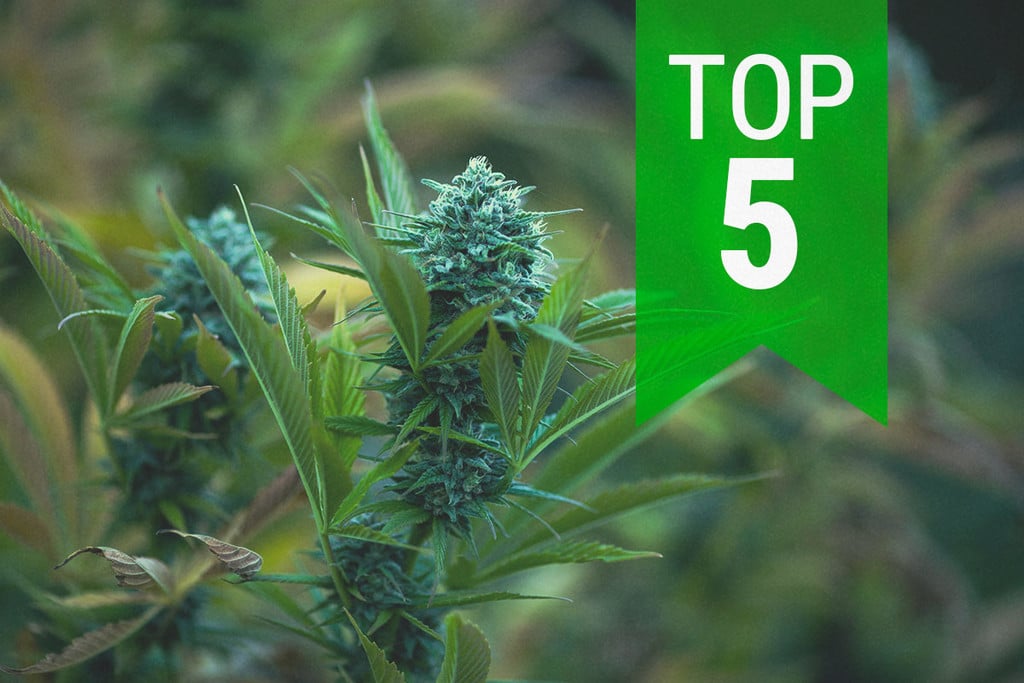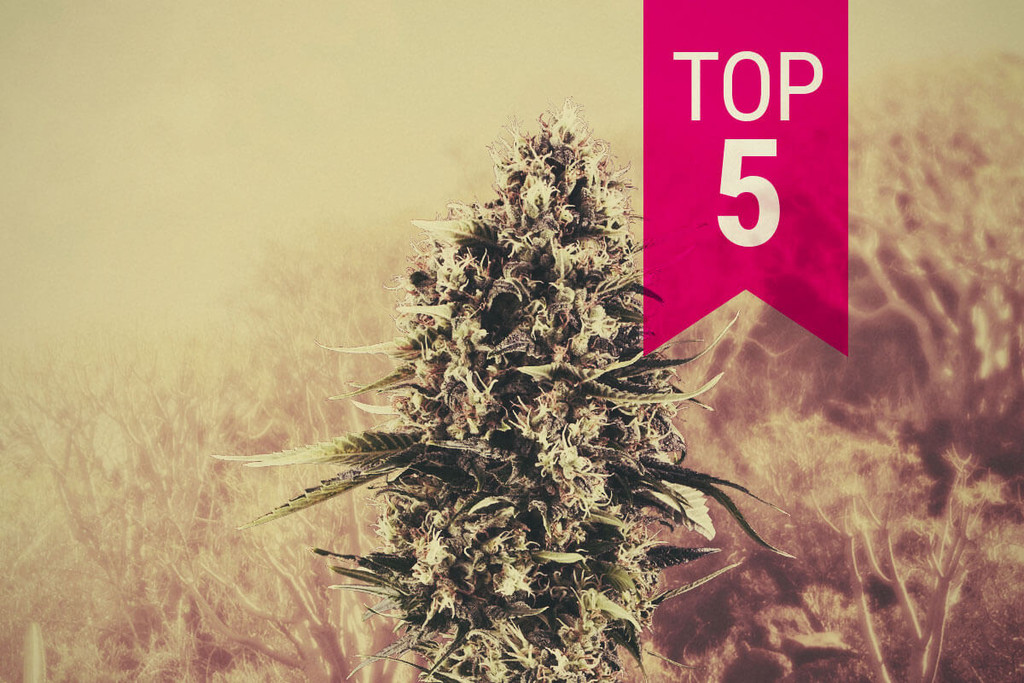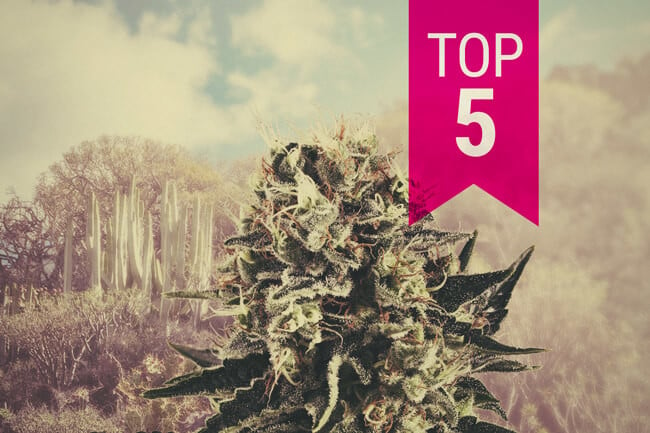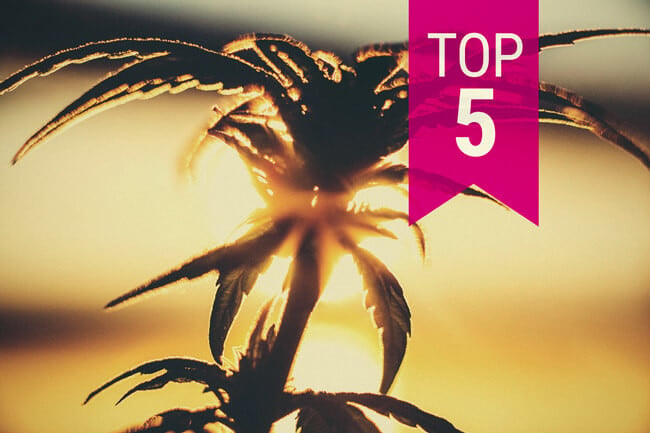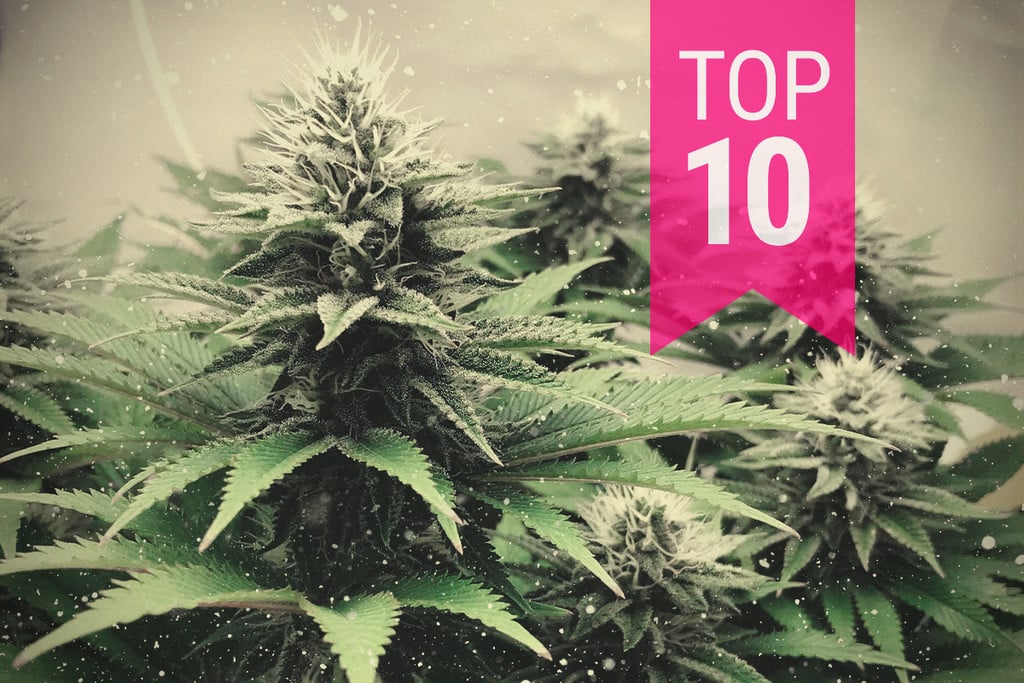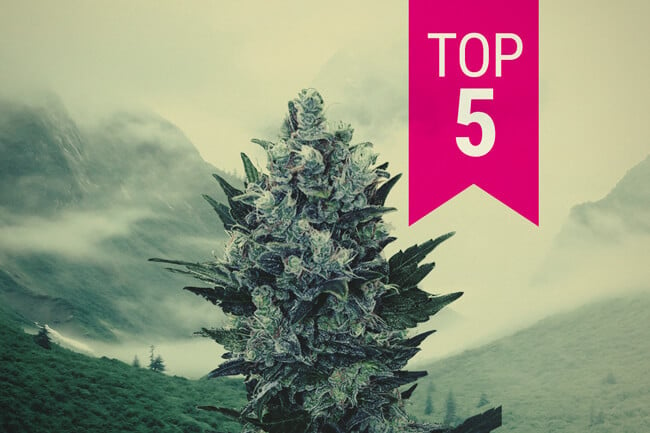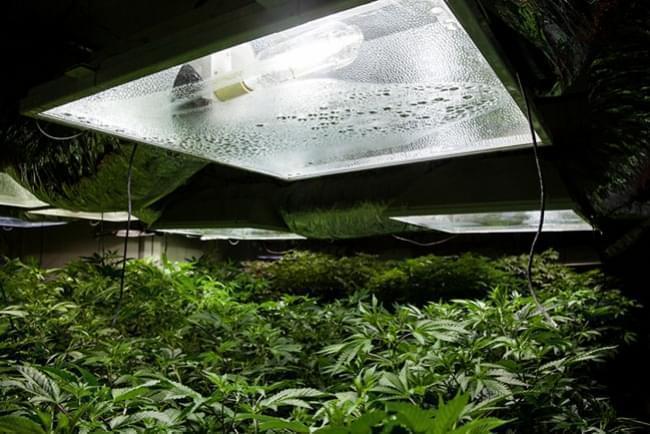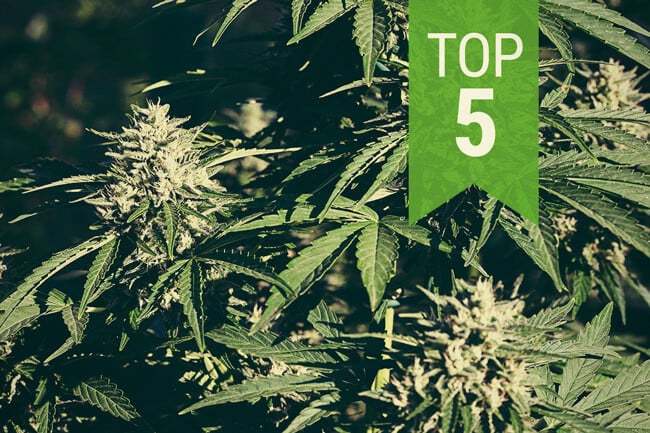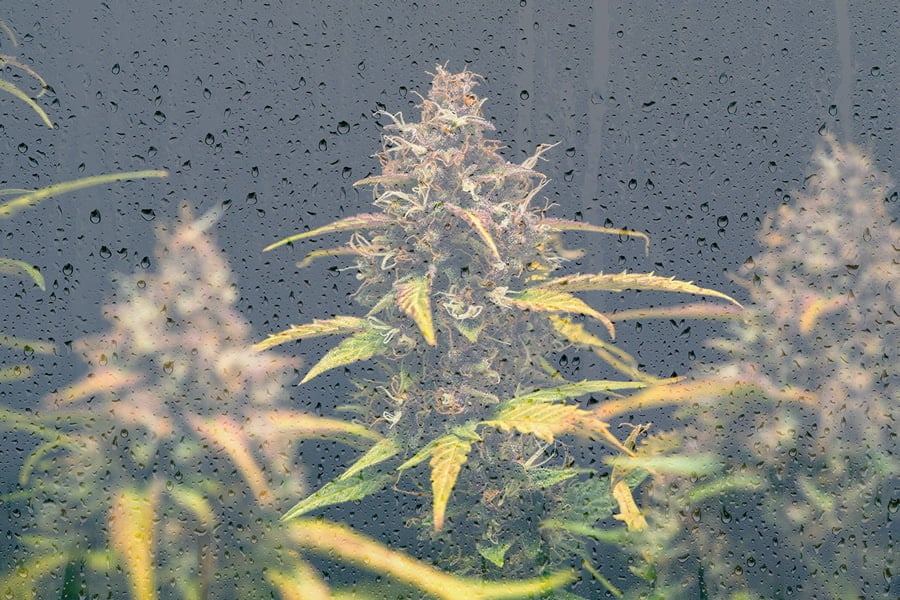.
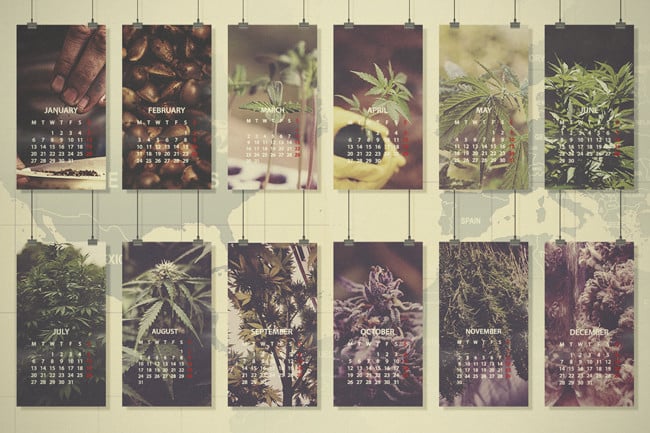
Cannabis Monthly Grow Guide: Southern Europe & Southern USA
Get the timing right for an ideal cannabis crop in Southern Europe and the US with this month-by-month guide by Royal Queen Seeds.
Contents:
CANNABIS MONTHLY GROW GUIDE: SOUTHERN EUROPE & USA
Southern Europe and the Southern United States share the same latitudes and an equally diverse range of microclimates. The Canadian border and Paris share the north, the middle is Lisbon and San Francisco, while New Orleans and the Canary Islands sweat right on the edge of the tropic of Cancer. The wonderful weed will grow well at all these latitudes; it’s just a matter of timing—but let’s set latitudes and timing aside just for a moment.
CANNABIS, THE PLANT
Cannabis is an annual dioecious plant that germinates in the spring and is ready for harvest some time in the autumn after substantial growth over the whole time period. Latitude and species selection play definite roles in when these times may actually be.
Isolating female plants to create sinsemilla and nurturing them to maturity extends the growing season of cannabis considerably. A wild crop in nature or a hemp crop have their life cycles significantly shortened as they are fertilised very early.
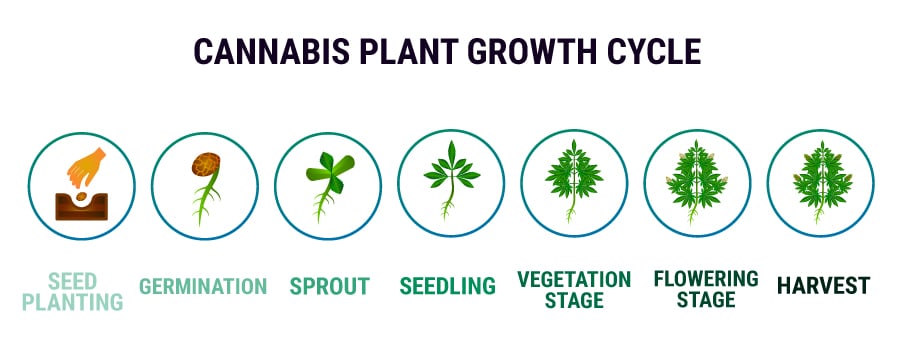
SPRING IS EARLIER IN THE SOUTH
Closer to the equator means earlier, warmer springs for earlier planting, and longer days followed by a long growing season. Further from the equator, spring comes later while the Earth tilts enough to supply the 12 hours and more of light needed for robust early cannabis vegetation. The grow season is shortened in proportion, but doesn’t affect final quality or potency—only harvest time comes sooner.
CHOOSE AN APPROPRIATE SPECIES
Also, species selection can mean differences in the stages of development of up to six weeks. A pure indica like Northern Light or an indica-dominant strain like Speedy Chile can be harvested and cured before something like a Shining Silver Haze or any sativa with a tropical heritage is close to ready. Some sativas will keep maturing until November, especially during a two or three-stage harvest on big plants.
WHEN DOES SPRING, SPRING?
Also, outdoor growing times are measured monthly from full moon to full moon. So, although the calendar may say spring begins on March 20th, as far as plants are concerned, it really begins in the days following the equinox. Everything slides along two weeks to accommodate natural cycles; plant activity can be observed to respond to lunar and seasonal cycles at each phase of growth.
DIAL YOUR OWN PRECISION
Giving exact times and dates for an area that is more than a thousand kilometres from top to bottom can be imprecise as the countries and areas in question are just so darn big and varied in climate. But don’t worry, cannabis is a virulent plant. Experienced growers have already developed a sixth sense as to which strains cater to their particular spot on the planet. Inexperienced growers can find great suggestions and general information throughout our website.
Each of these tips can be applied to either continent at each particular time of year. Cannabis goes through distinct phases in its growth that are common to all cannabis grown around the world. The same maintenance is required to achieve great marijuana from Mozambique to Melbourne or Paris to Patagonia.
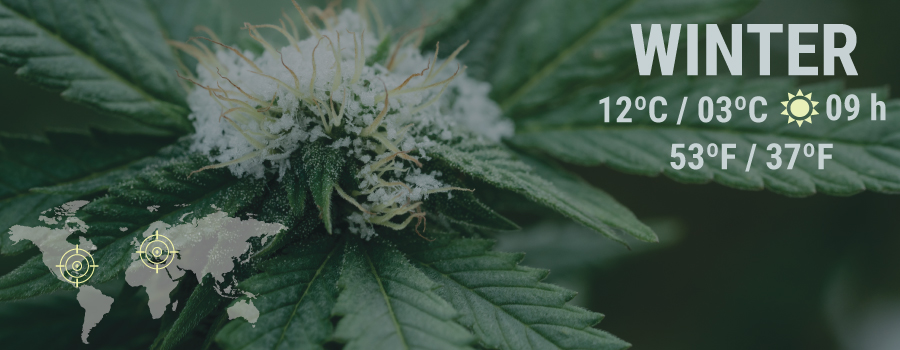
DECEMBER & JANUARY
• AVG day length: definitely too short for doing anything with outdoor cannabis in the Northern Hemisphere.
• AVG temps: not very cannabis friendly, that’s for sure.
EUROPE
It is the dead of winter and, except for tropical Gran Canaria, it is cold at best and buried under snow at worst in Southern Europe. If there was a successful crop in the previous year, many are enjoying the well-cured and aromatic fruits of their labour while considering the coming season and processing lessons learnt for getting more and higher-quality nuggets in the jar.
US
The same can be said for the States. While New York is gripped in a fist of ice and snow and Miami is tropically pleasant, successful farmers will be whiling away the fallow season.
To reinvigorate pots or garden beds, many will spread generous quantities of soil amendments such as alfalfa, kelp, feather and bone meals, rock dust, and worm castings. A good deep mulching to insulate the medium from the wrath of winter aids the decomposition process for virile soil come spring.
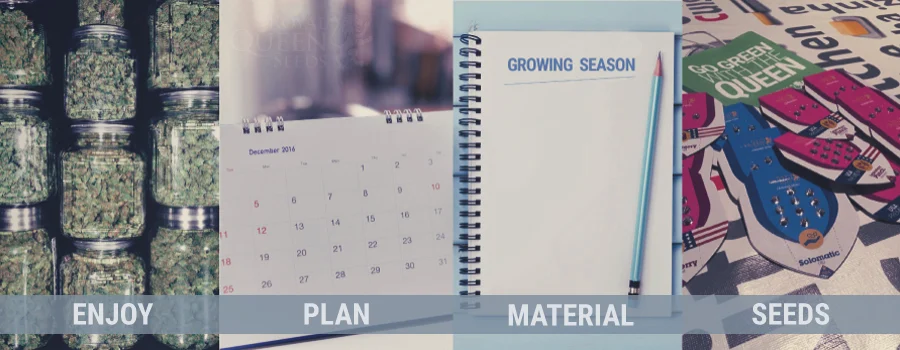
FEBRUARY
• AVG day length: calm down tiger, still too short for anything to do with weed, unless you are using supplemental lighting.
• AVG temps: still not warm enough.
It is the last full month of winter, and enthusiastic growers on both continents are sniffing the air for hints of spring. Those who are wanting to go big are planting seeds or setting clones aside for early vegetation under supplemental artificial lighting. Plants given a solid two months head start before relying on the sun alone will be truly monstrous cannabis trees once given plenty of root room and lots of lumens.
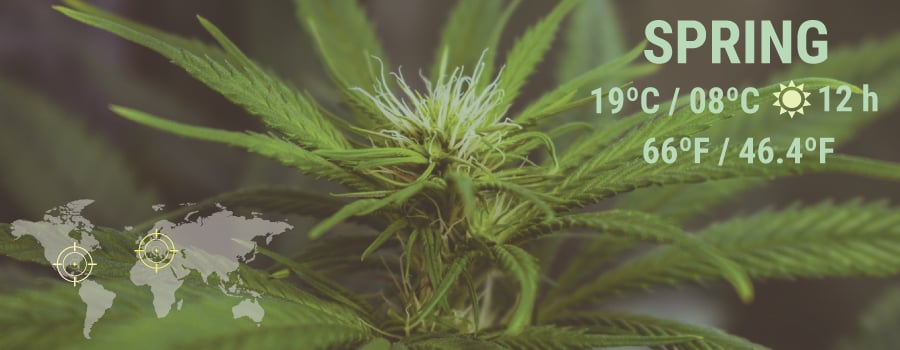
MARCH
• AVG day length: 11h 05m to 12h 34m
• AVG temps: 5–16°C
March is the first month of spring, which includes the all-important vernal equinox during the full moon period. After the full moon of March, spring can be considered to have truly started as the days begin getting longer than twelve hours.
A minimum of 12 hours of daylight are required to ensure healthy cannabis vegetation and later flower development. Plants germinated and nurtured earlier than this (without supplemental lighting) will get very satisfactory vegetation results, but the all-important end product will be fluffy and sub-standard. Going with the flow of the seasons will always render better plants when not using supplemental lighting.
Growers closer to the equator who germinate in spring will be popping seeds now. The days will quickly lengthen and temperatures will rise just as quickly to give baby plants ideal growing conditions. Further north, growers will wait until April to germinate, which guarantees functional day lengths and temperatures.
APRIL & MAY
• AVG day length: April - 12h 37m to 13h 59m
May - 14h 02m to 15h 06m
• AVG temps: April - 8–19°C
May - 13–23°C
And they’re off!
Spring is full of vigorous and verdant growth; temperatures are gentle, but warming noticeably, and the cannabis plant booms. If plants are in smaller pots for early vegetation, they will quickly fill the grow medium with roots, especially in the presence of mycorrhizae and Trichoderma colonies. Upturn a pot or two regularly to discern root development as potting-on wants to be done before any root-binding happens.
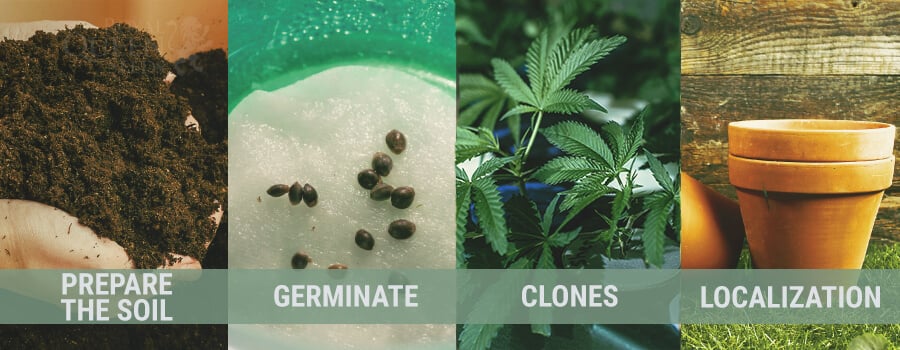
EUROPE
Organic pest and pathogen sprays can begin being applied in their fortnightly cycle now. A whole bunch of bugs will make their appearance to feast on nutrient-rich cannabis leaves as the weather warms. Check the undersides of leaves for eggs or signs of mites and other creepy crawlies that can inhibit healthy growth. It is a good time for enzyme-rich water additives like aloe vera or compost teas to help maintain soil and root health.
US
A number of species will require topping during this period, which encourages a more open aspect for better sun penetration and unhindered air circulation. Depending on the size of the plant, regular topping or training during the vegetative phase ensures an even canopy of buds with plenty of air circulation and no popcorn growth on any branches.

JUNE & JULY
• AVG day length: June - 15h 08m to 15h 23m
July - 15h 22m to 14h 39m
• AVG temps: June: 14–28°C
July: 17–31°C
Summertime, summertime, sum, sum, summertime.
You can be sure that any country you visit at this time of year is going to range from sensually warm to notoriously hot. Spanish and Southern Cali beaches are sweltering, while in the Alps or the Appalachians it is very pleasant.
EUROPE
It is time to look out for pathogens and bugs. The regular watering needed to keep plants hydrated during hot summers makes ideal conditions for root problems. A well-mulched, healthy and complex rhizosphere can fight off pathogens like Pythium and suppress bugs that like humid soil conditions. Still, keep an eye on plant performance to discern any root problems.
US
Foliage spraying with kelp and seaweed extracts or compost teas helps plants combat heat stress while maintaining root health and nutrient uptake. Top dressing with selected amendments ensures plants continue to get a steady feeding while rapidly vegetating during the summer. Top dressings include, but aren’t limited to, alfalfa and clove meal, any number of manures, worm castings, neem cake, compost, and shell flours. Foliage spraying silica during the heat is of mineral benefit to plants as well as a double deterrent for pathogens and creepy crawlies.
At the end of July, some species with shorter flowering times will be differentiating for a September harvest. This includes feminised strains that generally don’t get much larger than 2 metres. Watch those trichomes.
AUGUST
• AVG day length: 14h 39m to 13h 35m
• AVG temps: 19–30°C
Usually the time of differentiation in cannabis is the time when the plant changes from the vegetative phase to the “pubescent” stage. With flowers yet to properly develop, plants subtly change their growth patterns to reveal an altered silhouette. Rather than a thriving, bushy, and homogeneous plant with a reaching aspect, the plants morph to hint at where flower sights will be. Branches may turn up at the ends in preparation for buds, and un-topped tops will stop growing side branches to concentrate on cola building.
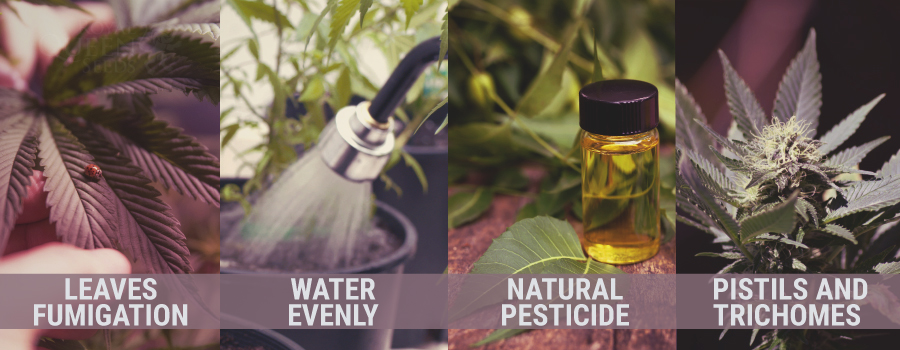
EUROPE
From this point on, consistent flower growth can be expected until harvest time. Clusters of calyxes form on the nodes, ready to expand into full flower structures. Pistils are vibrant and healthy, and there is already visible trichome development.
US
Organic weed in beds or pots will be getting a good feed around now, with some rich amendments for flowering plants being added as top dressing. Growers using standard commercial potting mixes need to be careful as many brands run very “hot”, and supplementation can irrevocably burn plants. With cannabis, making or purchasing a super soil, then bio-organically maintaining it, is the way to go for contemporary high-grade outdoor weed.
With regular weed, those males should be gone, gone, gone. Feminised plants and those with shorter flowering times will be fattening up quite nicely now, as will a second autoflower crop.
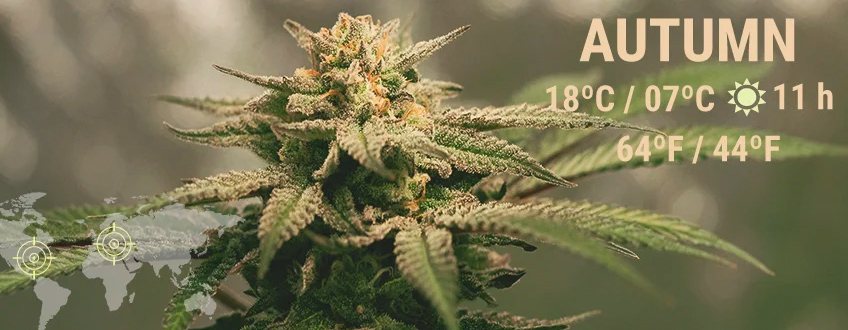
SEPTEMBER
• AVG day length: 13h 30m to 11h 54m
• AVG temps: 14–26°C
On both continents, flowering is properly underway and plants are laying in puffballs of young calyxes that expand along their own stalk to form a cannabis bud. Individual calyxes can be seen and pistils are becoming further separated as the flower clusters increase in volume. Aromas are also starting to develop and resin production within the trichomes is increasing.
More rapidly maturing species will be harvested mid to late September, so just another reminder to watch those trichomes for changing colours.
The second batch of autos will be harvested at the beginning-to-middle of September, and a third crop can be set out as a late-season crop. Plants will not be as large since the days are shortening, but will mature nonetheless.
September is the month of the autumnal equinox, when days following the full moon start to be less than twelve hours. This is mega resin season.
OCTOBER
• AVG day length: 11h 51m to 10h 26m
• AVG temps: 11–21°C
This is what it’s all about. Resin production is off the charts, buds are dense and compact with swollen calyxes, and branch support is likely needed. Aromas are at their maximum, and the time has come to watch those trichomes much more closely.
EUROPE
During the final stages, two weeks is a substantial amount of time in the growth of a vigorous annual like cannabis. Still, most species will be harvested in this time-frame; whether it be early or late in the month depends on the dominant genetic traits.
US
Larger plants, especially those giants that were given supplemental lighting during vegetation, will need to have the more advanced upper buds removed. This allows the lower flowers to mature in more light.
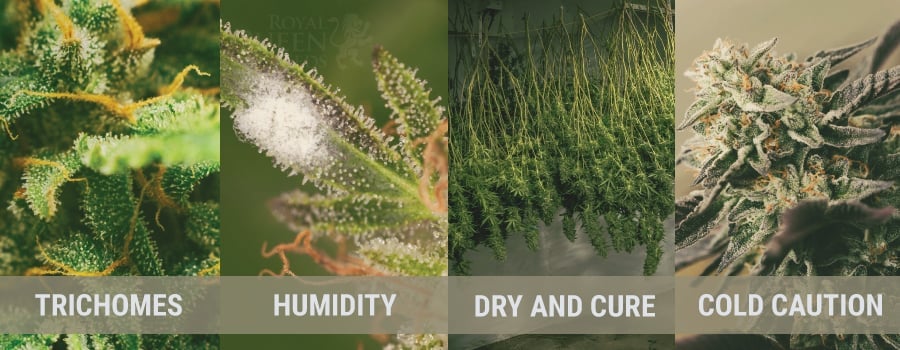
NOVEMBER
• AVG day length: 10h 23m to 9h 17m
• AVG temps: 6–16°C
At this time of year, and at these shared latitudes, the same thing will be happening on both continents. Resin-encrusted flowers are being admired and sniffed, some dry in the jar, some still on the plant, yet all bulging with trichomes. This is the true meaning of a labour of love.
Sativas with a notoriously long maturing time are finishing up now, as are the lower flowers of larger plants. The much cooler temps at this time of year can promote exceptional colouration of cannabis.
Plants harvested last month will be dry and on their way to being fully cured by now. They have been trimmed and hung in an environment with stable humidity and temperatures, then cured in an airtight container that is burped regularly to outgas any moisture and stale air.
The final autoflower crop in a multi-harvest grow is also complete and ready for harvest. The plants will be small as sunlight wasn’t optimum, but there is still high-quality flower ready for the drying rack.


























